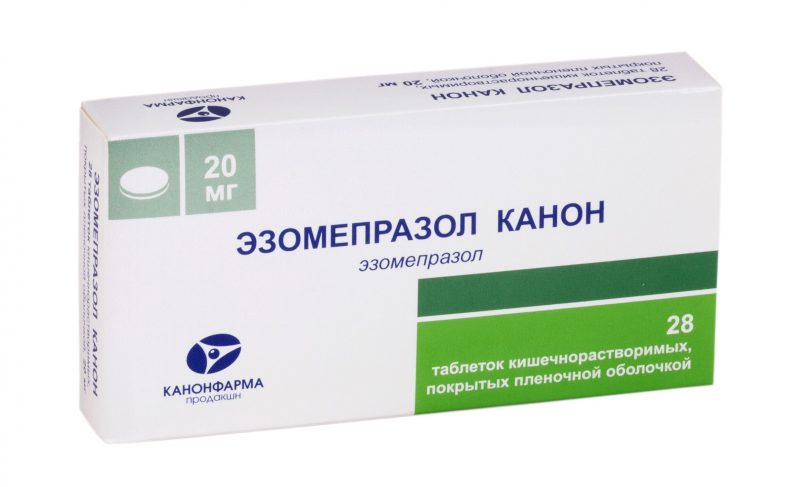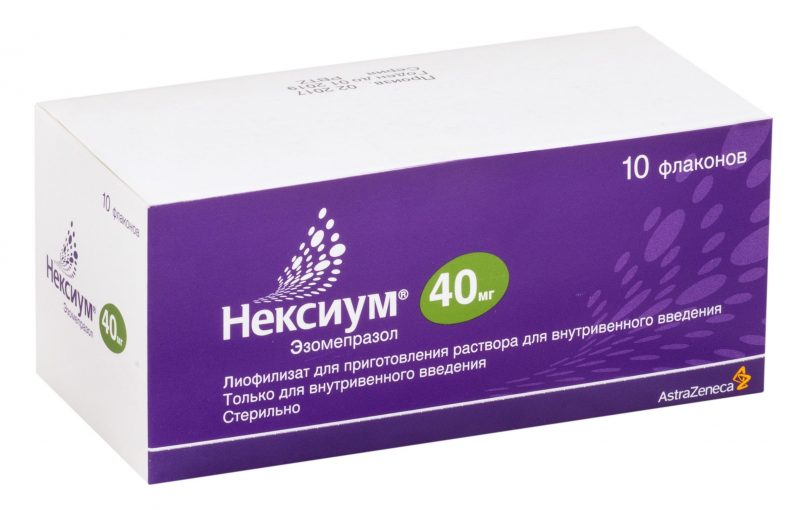The presented drug is prescribed for patients with increased secretion of hydrochloric acid to neutralize the dangerous effects in the form of erosion of the gastrointestinal mucosa. However, there are a number of Esomeprazole analogues that cope with similar tasks no worse.
Material Content:
Composition (active substance) of Esomeprazole
The action of Esomeprazole is based on a decrease in the amount of hydrochloric acid produced by inhibiting the activity of cell wall proteins. The main substance is esomeprazole magnesium dihydrate, which is contained in the preparation along with excipients and stabilizers. The tablet shell consists of a specific substance that forms a film coating.
Analogs in tablets for children
To reduce the amount of acid produced by the stomach, young children are prescribed a drug whose trade name sounds like “Pariet”. This is a rather expensive drug of the last generation. Replacement with an analogue is cheaper only after consultation with a doctor. And it is also possible to prescribe Nexium in a dosage of 10 mg. However, it is worth noting that the instructions for the use of both drugs indicate the impossibility of taking before reaching the age of 12 years.
Adult Substitutes
There are several medications similar to Esomeprazole, whose action is also aimed at combating the increased acidity of the gastrointestinal tract and eliminating its effects.
Nexium
The drug is manufactured in the UK. Unlike domestic, it is the only pure isomer.This means that the mechanism of action does not differ from similar means, but it has improved characteristics.
These include:
- more pronounced control of the amount of acid produced;
- bioavailability is higher;
- significantly lower liver matter after metabolism;
- less susceptible to fluctuations in efficiency against the background of individual characteristics.
The combination of these qualities indicates a higher clinical performance.
In addition, the form of release of Nexium is much more diverse: tablets with a dosage of 20 mg and 40 mg; pellets and granules 10 mg; lyophilisate for intravenous administration after preparation.
Emanera
Unlike Esomeprazole, the drug is available in capsule form. Each contains a special form of substance - pellets, which can be dissolved in water or used for administration through the nasopharynx through a probe. Otherwise, the preparations are completely similar. The cost of the course also does not have a significant difference.
Instructions for use and dosage
Esomeprazole tablets should be taken with a sufficient amount of water, not chewing, but swallowing whole. Depending on the diagnosis, various regimens are possible.
In chronic recurring diseases, which are caused by the release of the contents of the stomach and duodenum into the esophagus, followed by their defeat, the necessary measures are taken:
- treatment in the stage of inflammation of the mucosal erosion - 40 mg daily and once. The minimum course is 1 month, however, repeated administration is recommended in the absence of improvements;
- long-term prophylaxis of newly occurring erosion of the esophagus, including when taking non-hormonal anti-inflammatory drugs - 20 mg once every day, the duration of the course is regulated by the doctor;
- treatment of signs of an ailment without the occurrence of inflammation of the gastrointestinal tract - 20 mg once daily, after the disappearance of symptoms, it is possible to take only during relapses of the disease.
Patients taking non-hormonal anti-inflammatory drugs, as well as those at risk for ulcerative inflammation, are not recommended to switch to an irregular medication.
For gastric and duodenal ulcers as part of complex therapy - 20 mg twice a day for 7 days.
When observing hyperbolized production of hydrochloric acid, it is recommended that 40 mg of the drug be administered 2 times a day, followed by an increase in dose until a positive effect occurs.
Contraindications and side effects
The drug has a number of contraindications that do not allow it to be prescribed to some groups of patients:
- in the presence of a hyperbolic reaction to any of the components of the drug;
- persons under the age of majority (the appointment of Esomeprazole for children from 12 years of age with symptoms of gastroesophageal reflux disease is indicated);
- when taking drugs that act as inhibitors of HIV.
The use of esomeprazole may cause side effects:
- circulatory system - a decrease in the number of red blood cells and / or platelets;
- nervous system - headaches, confusion, hallucinations are possible;
- gastrointestinal tract - pain, impaired bowel movement, increased gas formation, the occurrence of dry mouth or undesirable taste changes;
- skin - various manifestations of allergic reactions (itching, urticaria, rash).
And also sometimes there is a deterioration in well-being, muscle pain or weakness. Very rarely there have been cases of narrowing of the bronchial pathways, the development of hepatitis (possibly the course of the disease without jaundice or in combination with it). Often with the intravenous administration of large doses of the drug, a hyperbolic reaction of the skin is observed.
Esomeprazole is an effective way to combat increased production of hydrochloric acid.Its use is indicated both as an independent drug and as part of complex therapy. The use of analogues is allowed only after consulting a doctor and appropriate appointments.



















